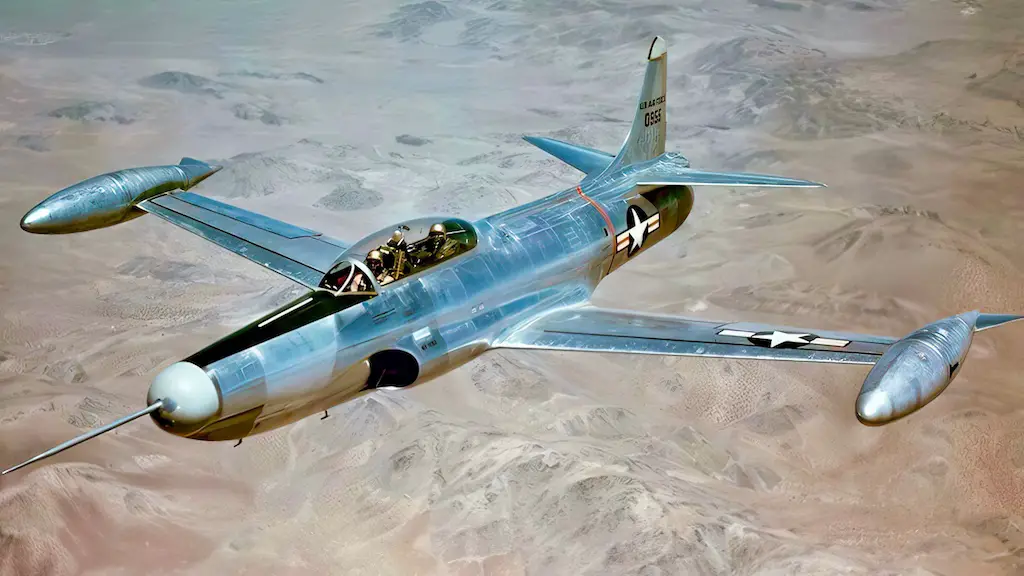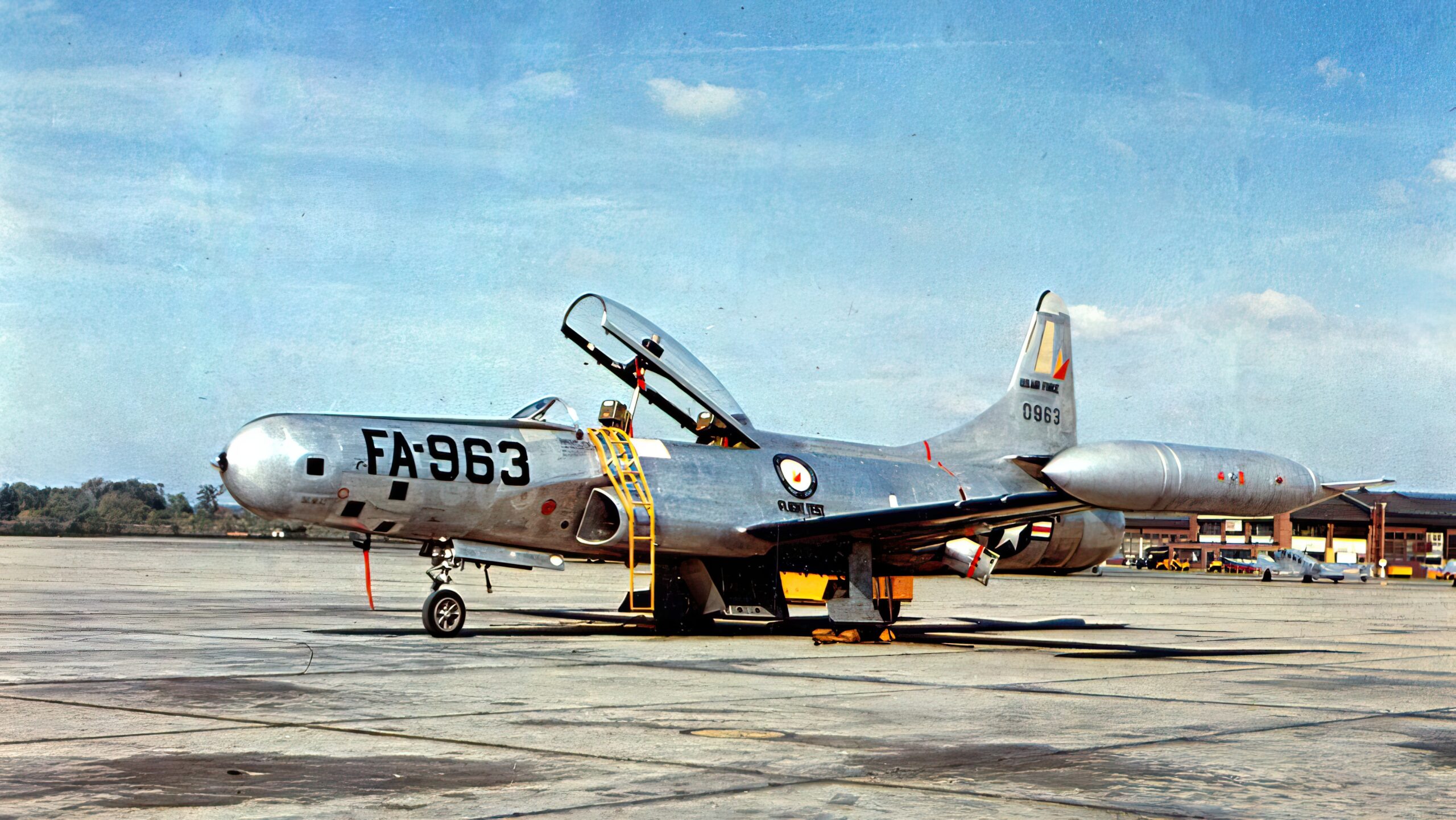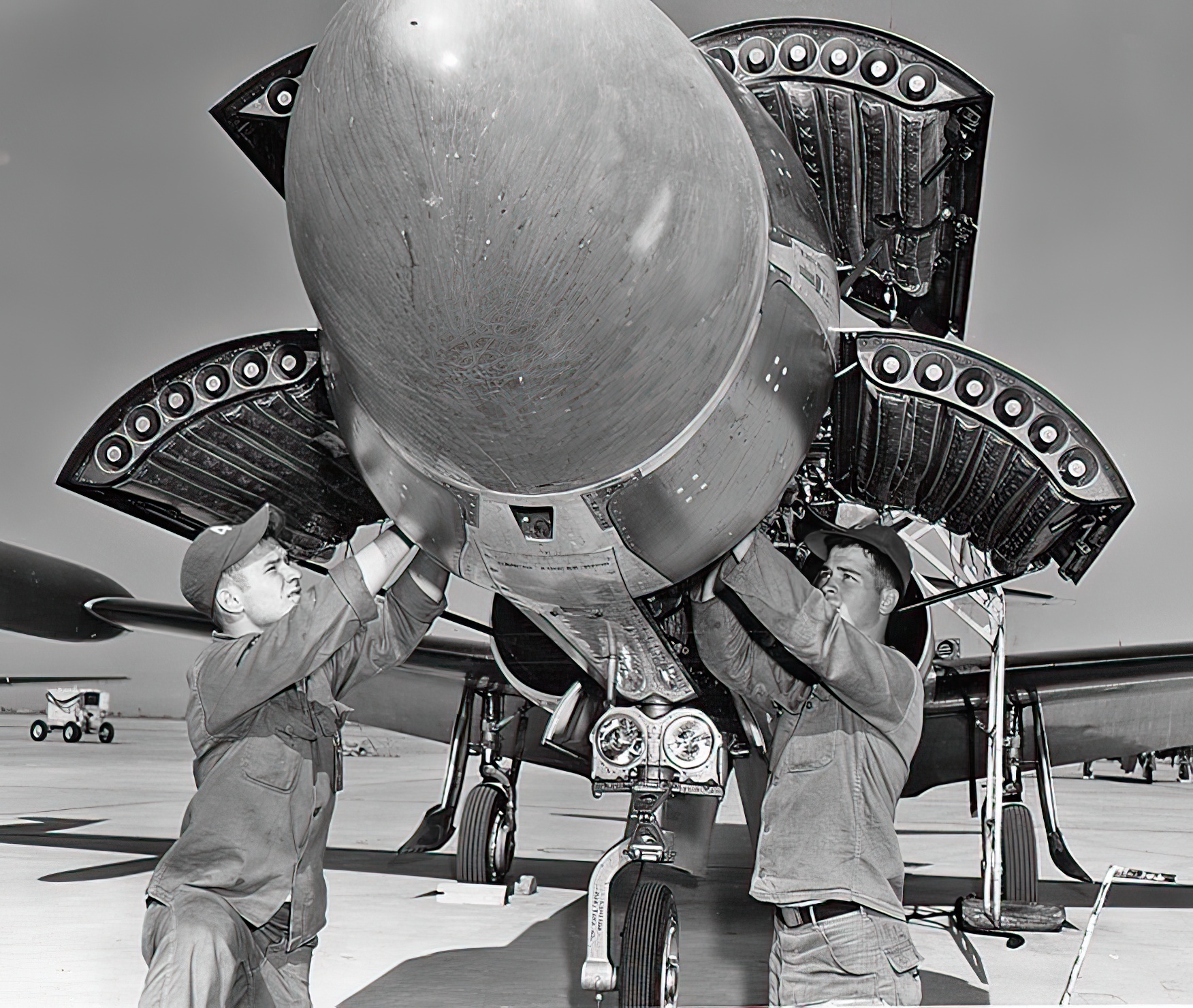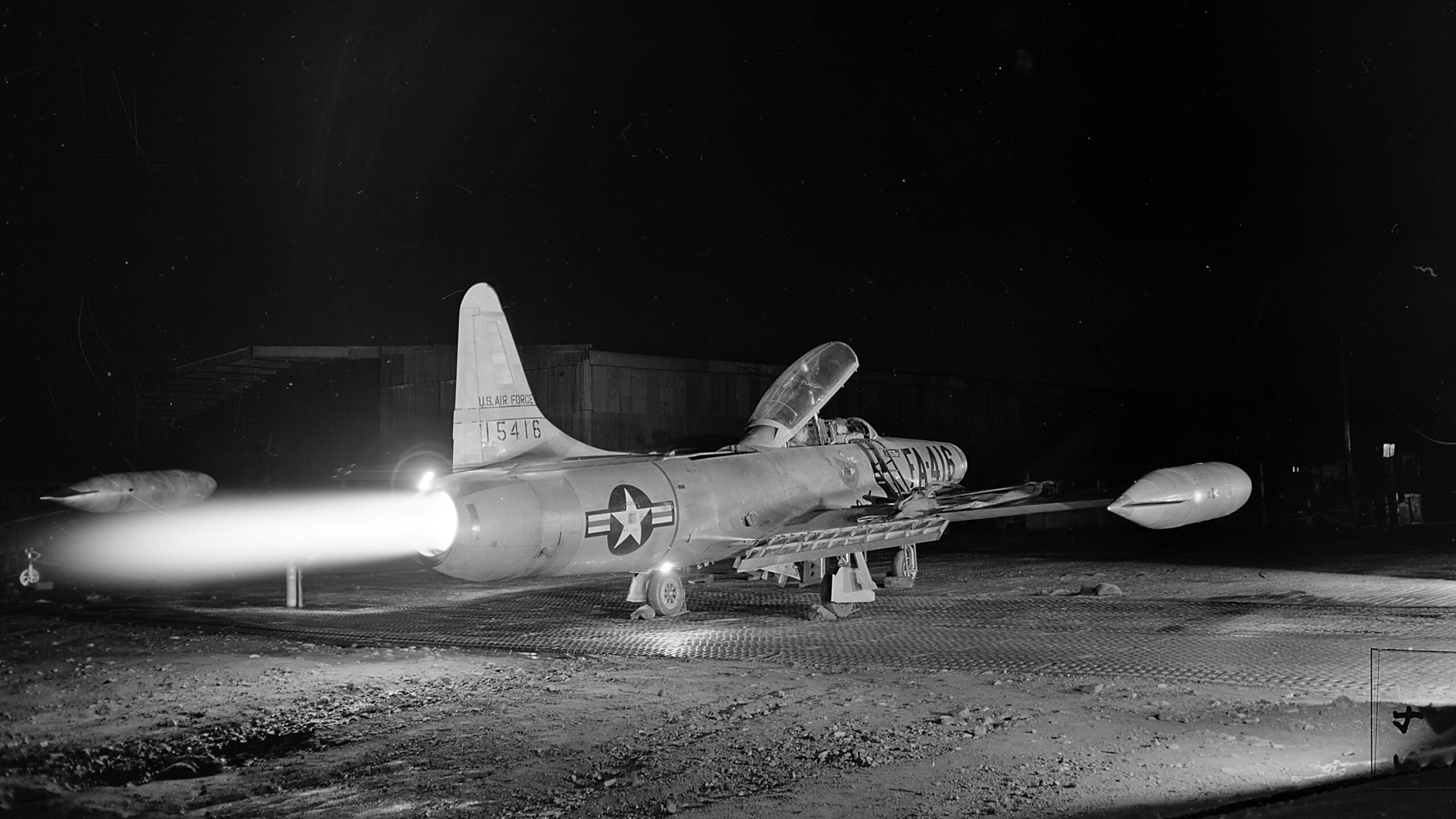
Lockheed F-94 Starfire was the first operational jet-powered all-weather interceptor of the US Air Force, as well as the first USAF fighter to use an afterburner. For over three years, between late 1949 and 1953, it remained the Air Force’s only all-weather jet fighter, guarding America against the threat of Soviet strategic bombers at the height of Cold War tensions. It also went to fight in the skies of Korea, where its pilots pioneered jet-against-jet aerial combat, engaging in dogfights with MiG-15s.

New requirements for evolving warfare
The Starfire was developed in the late 1940s in the context of a growing threat from Soviet strategic bomber fleet: the USSR had reverse-engineered the Boeing B-29 Superfortress, given it the Tupolev Tu-4 name and started churning out these aircraft in hundreds. In case of a real high-end conflict the United Stated needed protection around the clock, in rain and blizzard, so Lockheed was tasked with designing an all-weather, radar-equipped interceptor.

The Shooting Star’s offspring
The company did not make it from scratch. Instead, Lockheed took its T-33 trainer, the “T-bird,” which was itself a derivative of the P-80 Shooting Star, the first American operational jet fighter. In fact, even first 17 production F-94As were T-33 conversions. Lockheed engineers equipped them with armament, an APG-32 radar and Hughes E-1 fire control system.
Like the T-33, the F-94 was also crewed by two, only in this case these were not the pilot and the instructor, but the pilot and the radar operator. The aircraft’s armament consisted of 24 unguided 2.75in Mighty Mouse rockets launched through snap-action doors in the forward fuselage and stored in a ring around the radome. Additional 24 rockets were carried in wing pods. While F-94A and F94B variants also had four .50-cal machine guns, the later F-94C variant carried no guns at all.
Testing out new jet-age technology
As the radar equipment and armament made the airframe substantially heavier, Lockheed repowered the aircraft, replacing the Allison J33-A-35 turbojet with an afterburning Pratt & Whitney J48-P-5, capable of producing up to 8,750 lb of thrust. Being heavier and faster than its predecessor, the F-94C was also the first production fighter to use a braking parachute.

Starfire’s Cold War frontline duty
The aircraft’s first prototype flew in April 1949, and in early 1950 the Starfire already started reaching Air Defense Command squadrons, replacing F-82F Twin Mustangs. During its less than a decade-long career the Starfire served with more than two dozen air defense squadrons before being completely replaced by supersonic interceptors. Overall, Lockheed produced over 850 aircraft of the type.

However, it was in the Far East that Starfire showed its potential in real combat situations, providing air defense of Seoul and flying interception missions over South Korea and the Yellow Sea. Starfires also operated from the Misawa Air Base in northern Japan to fend off invading Soviet Aircraft coming in from Vladivostok and Sakhalin.
The USAF was reluctant to fly the Starfire behind enemy lines, fearing that this cutting-edge aircraft might get into wrong hands. Still, later on Starfires escorted B-29 Superfortresses on bombing raids and picked fights with MiGs over North Korea, scoring several confirmed kills. Only one F-94 was confirmed to be lost to enemy fire, although several more crashed due to various accidents.




